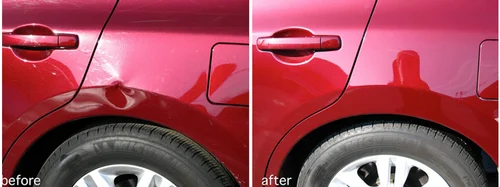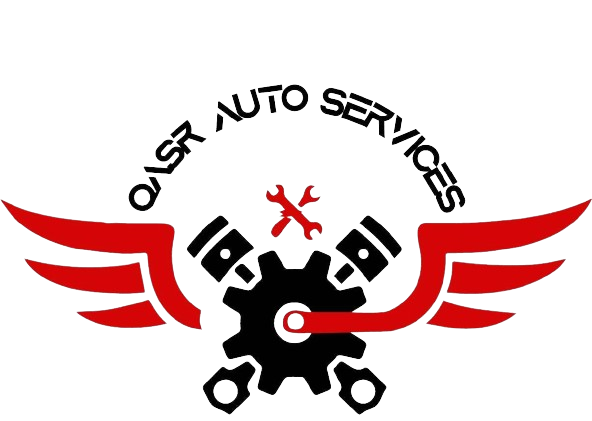
Paintless Dent Repair (PDR) vs. Traditional Dent Repair: Which is Better?
When your vehicle sustains a dent, you typically have two main options for repair: Paintless Dent Repair (PDR) or Traditional Dent Repair. Both methods can restore your car’s appearance, but the best choice depends on the type, severity, and location of the damage. In this article, we will compare PDR and traditional dent repair to help you understand the pros and cons of each method, and determine which one is better suited for your needs.
Paintless Dent Repair (PDR)
Paintless Dent Repair, also known as PDR, is a modern technique used to repair minor dents without disturbing the original paint job. This method is typically employed for small, shallow dents caused by hail, door dings, or minor impacts. PDR technicians use specialized tools to gently massage the dent from behind the panel, pushing it out until the metal returns to its original shape.
Pros of PDR:
Preservation of Original Paint: One of the main advantages of PDR is that it maintains the vehicle’s original paint. Since PDR doesn’t involve any sanding, body filler, or repainting, there’s no risk of mismatched paint or the chance of diminishing the resale value of the car due to repainting.
Faster Turnaround Time: PDR is usually completed much quicker than traditional methods. While traditional repairs can take several days, PDR can often be done in a matter of hours. This is particularly beneficial if you need your car back quickly.
Cost-Effective: Since PDR doesn’t require paint, fillers, or extensive labor, the cost is typically lower than traditional dent repair. The absence of these materials also reduces the cost of labor, making it a more affordable option for minor dents.
Environmentally Friendly: Since PDR doesn’t require the use of paints, chemicals, or fillers, it’s a more eco-friendly choice compared to traditional methods. There are fewer chemicals involved, which reduces the environmental impact.
Resale Value: Keeping the original paint intact helps maintain your car’s resale value. Potential buyers often prefer a vehicle with original paint, as it can signal that the car has been well-maintained.
Cons of PDR:
Limitations on Dent Size and Severity: PDR is best for smaller, less severe dents. If the dent is deep, sharp, or has caused cracks in the paint, PDR may not be feasible. Additionally, if the metal has been stretched or deformed, it may not be possible to repair it using PDR.
Skill Dependent: The success of PDR heavily depends on the skill of the technician. The process requires a trained professional with experience in manipulating the metal without causing further damage. Poorly executed PDR can lead to further dents or surface imperfections.
Access to the Dent: PDR requires access to the rear side of the damaged panel. If the dent is located in an area with limited access, such as a body part with multiple components, the technician may have difficulty performing the repair.
Traditional Dent Repair
Traditional dent repair, also known as conventional dent repair, involves more intensive work and is typically used for larger, deeper dents or situations where the paint has been chipped, cracked, or damaged. This process usually involves filling the dent with body filler, sanding the area smooth, and then repainting it to match the car’s original color.
Pros of Traditional Dent Repair:
Can Handle Severe Damage: Traditional dent repair is suitable for a wide range of damage, from large dents to deep impacts, as well as situations where the paint has been scratched, cracked, or severely damaged. If the dent is large, sharp, or occurs near an edge, traditional methods are often the better choice.
More Durable Fix: Traditional dent repair involves sanding down the affected area and applying a new layer of paint and primer, which often results in a more permanent and durable solution for deeper dents. The repair is generally more resilient over time compared to PDR.
Versatile: Traditional repairs can be performed on almost any type of dent, including those caused by more severe accidents or impacts. It’s a versatile option that can fix virtually any form of body damage.
Cons of Traditional Dent Repair:
Time-Consuming: Traditional dent repair is generally more time-intensive than PDR. The process of sanding, filling, and repainting takes several days to complete. Moreover, you may have to wait for paint to dry and cure properly before the repair can be finalized.
Higher Cost: Because traditional dent repair involves more materials (such as body filler and paint) and more labor, the cost is usually significantly higher than PDR. The longer repair time and additional materials contribute to a higher overall expense.
Risk of Mismatched Paint: Despite advances in paint technology, it’s difficult to match the exact shade of the original paint. Over time, even if the repair is color-matched initially, the new paint may age differently than the original paint, leading to noticeable differences in color or finish.
Potential Impact on Resale Value: While traditional dent repair can restore your car’s appearance, the repainting process can affect its resale value. Buyers may be wary of purchasing a car with repainting, as it can be seen as a sign of prior damage. It also raises concerns about the quality and longevity of the repair work.
Which Option is Better for You?
Choose PDR if: You have small to medium-sized dents, especially if the paint is intact. PDR is ideal for dings from hail, minor accidents, or door impacts. It’s quicker, more affordable, and preserves the car’s original finish.
Choose Traditional Repair if: The dent is deep, sharp, or if the paint is cracked or chipped. Traditional repairs are also a better option for dents that cannot be accessed from behind the panel or if the dent is in an area that PDR tools can’t reach. For larger or more severe damage, traditional repair provides a more comprehensive fix.
Are you looking for car dent repair shop in Sharjah?
Qasr Auto Services in Sharjah offers expert car dent repair services, specializing in both Paintless Dent Repair (PDR) and traditional dent repair methods. Their skilled technicians are equipped with advanced tools to handle minor dings, hail damage, and deeper dents, restoring your vehicle’s appearance. Whether you need a quick and cost-effective fix or more extensive repairs, Qasr Auto Services ensures quality service with a focus on customer satisfaction. Visit them for reliable, efficient, and affordable dent repair solutions in Sharjah.
